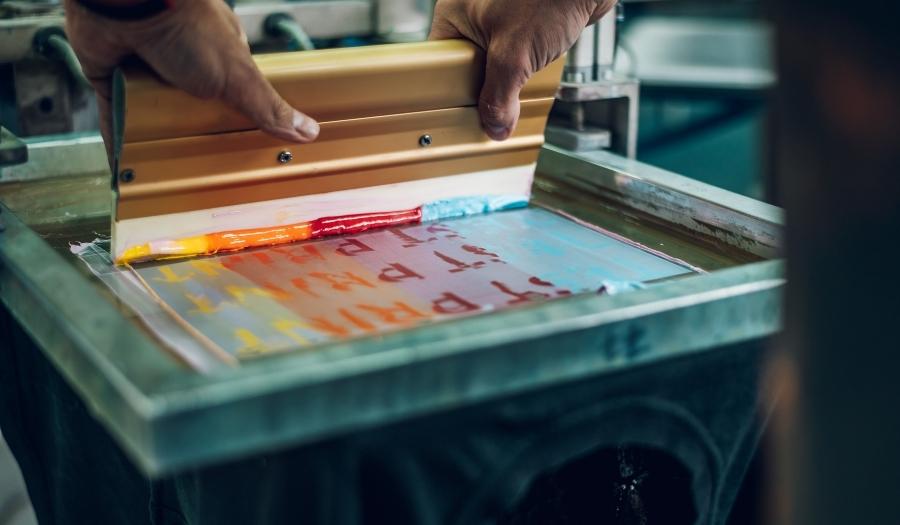Are you wondering about mesh selection when it comes to screen printing? Click here for the ultimate guide to mesh selection for screen printing.
Mesh selection is a critical part of the screen printing process, but knowing which mesh is best for your project can be confusing. This blog post will help you understand the different types of mesh and how to select the right one for your needs.
We will discuss mesh count, thread size, and the percentage of open area in mesh selection and why it's important. So whether you're a seasoned pro or brand new, read on for everything you need to know about mesh selection!
What Is Mesh and Why Is It Important for Screen Printing?
Mesh is the screen that supports the stencil during the screen printing process. It's generally made of polyester, nylon, or stainless steel. The threads in the mesh are interwoven to create a hole-free fabric. Mesh is available in different thread sizes (or diameters), indicated by either a number or letter.
Mesh count refers to the number of threads in one square inch of fabric. The higher the mesh count, the finer the thread, and the smaller the holes. For example, a 125-thread/inch (48-thread/cm) mesh will have much smaller openings than a 60-thread/inch (24-thread/cm) mesh.
The choice of mesh count is important because it will determine the amount of detail that can be printed. For example, finer meshes are better for printing small details and half-tones. In comparison, coarser meshes are better for printing large areas of solid color.
What Is Thread Size and Why Is It Important?
The thread size is the diameter of the individual threads that make up the mesh. It is generally expressed in microns (µm).
Thread size is important because it will affect the amount of ink passing through the screen. A larger thread diameter will allow more ink to pass through, while a smaller thread diameter will allow less ink.
The choice of thread size is important because it will determine the overall quality of the print. Smaller thread diameters will produce a higher quality print, while larger thread diameters will produce a lower quality print.
What Is Open Area and Why Is It Important?
Open area is the percentage of the total screen area not blocked by threads. It is generally expressed as a percentage.
It's important to consider this because it will determine the amount of ink deposited on the substrate. A screen with a higher open area will allow more ink to be deposited. A screen with a lower open area will allow less ink to be deposited.
The choice of open area is important because it will determine the overall coverage of the print. A screen with a higher open area will produce a more heavily printed image. A screen with a lower open area will produce a lighter printed image.
How to Choose Mesh Count, Thread Size, and Open Area for Screen Printing?
The choice of mesh count, thread size, and open area will depend on the type of substrate, ink, and the desired print quality. Consider the following options:
Type of Substrate:
The choice of mesh count, thread size, and open area will depend on the type of substrate. For example, a coarser mesh (with a lower thread count) is typically used for printing on thicker substrates, such as cardboard or poster board. Conversely, a finer mesh (with a higher thread count) is typically used for printing on thinner substrates, such as paper or fabric.
Type of Ink:
The number of mesh count, thread size, and open area must be chosen depending on the kind of ink. For example, a coarser mesh (with a lower thread count) is typically used for printing with thicker inks, such as blockout inks. Conversely, a finer mesh (with a higher thread count) is typically used for printing with thinner inks, such as discharge inks.
Desired Print Quality:
The mesh count, thread size, and open area will also depend on the desired print quality. For example, a finer mesh (with a higher thread count) will produce a higher quality print. A coarser mesh (with a lower thread count) will produce a lower quality print.
In general, the following Mesh Counts, Thread Sizes, and Open Areas are typically used for Screen Printing:
- Mesh Count: 40-60 threads/inch (16-24 threads/cm)
- Thread Size: 18-20 microns
- Open Area: 50-60%
However, the choice of Mesh Count, Thread Size, and Open Area will ultimately depend on the specific application. Therefore, it is important to test different Mesh Counts, Thread Sizes, and Open Areas to find the combination that produces the best results for your particular application.
What Are the Different Types of Mesh Available on the Market Today?
There are a variety of mesh types available on the market today. However, the most common mesh types are monofilament and multifilament.
Monofilament Mesh:
Monofilament mesh is made from a single strand of thread. It is the most common type of mesh available on the market today. Monofilament mesh is available in a variety of thread diameters and Mesh Counts.
Multifilament Mesh:
Multifilament mesh is made from multiple strands of thread. It is less common than monofilament mesh, but it is gaining popularity due to its superior print quality. Multifilament mesh is available in a variety of thread diameters and Mesh Counts.
Are You Looking For Mesh Selection Options for Screen Printing?
Microscreen LLC is the leading supplier of mesh selection options for screen printing. We carry a wide range of mesh counts to suit your needs.
Our products are made from the highest quality materials to ensure durability and accuracy. We also offer a money-back satisfaction guarantee.
Contact us today to speak with a mesh selection specialist.
